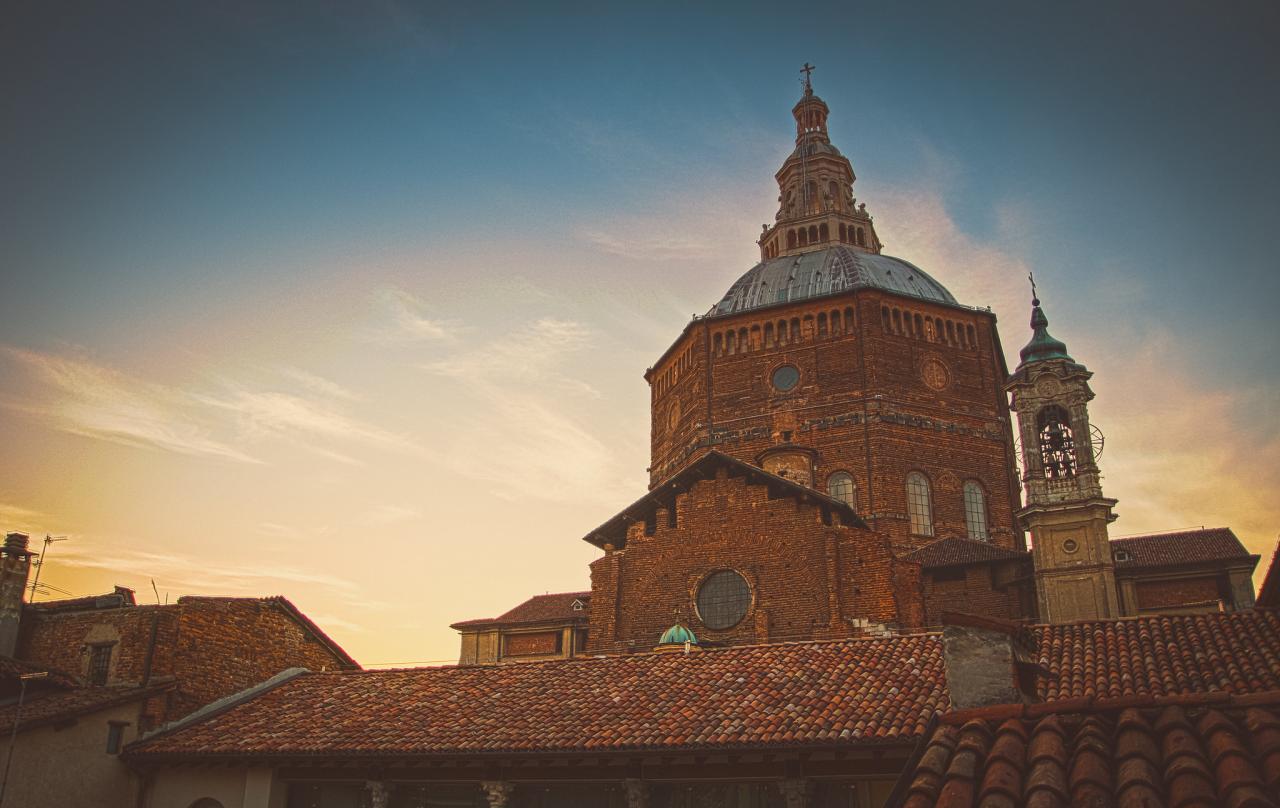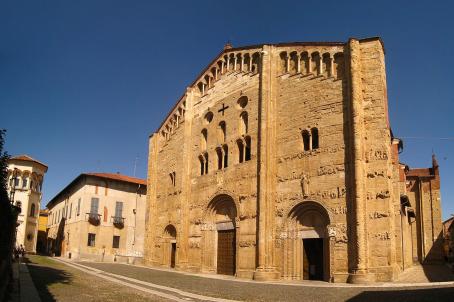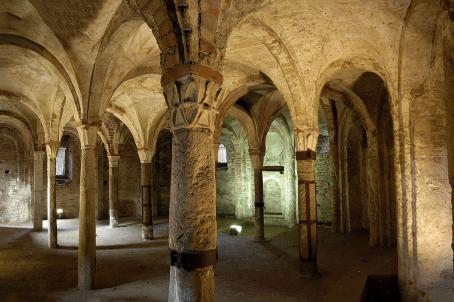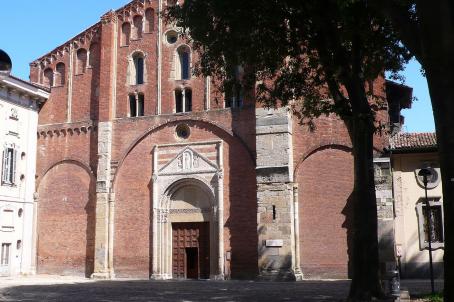Cathedral of Pavia
The Cathedral of Pavia, founded in the 15th century, is an important Renaissance building, recognizable by its octagonal masonry dome, one of the largest in Italy. The construction of the cathedral began in 1488 on the site of the two pre-existing Romanesque cathedrals. The cathedral was not completed until the 1930s, with the construction in 1930-33 of the two arms of the transept, built according to the original 16th-century plans. A 78 m high bell tower (the Torre Civica) originally flanked the cathedral. Mentioned as early as 1330 and enlarged in 1583, it collapsed in 1989. Its remains are still visible on the left side of the cathedral.






